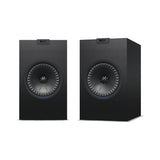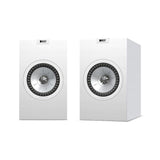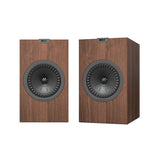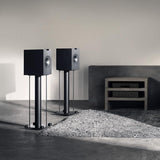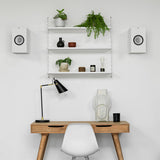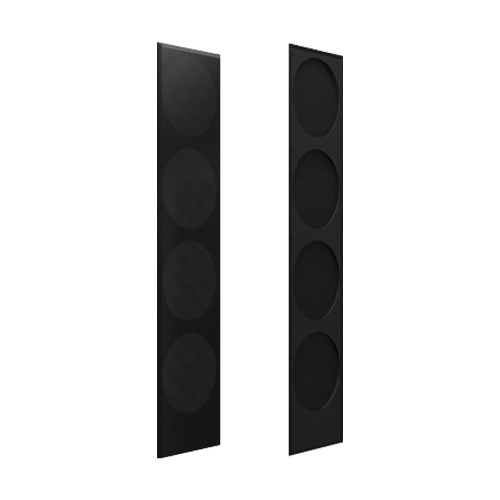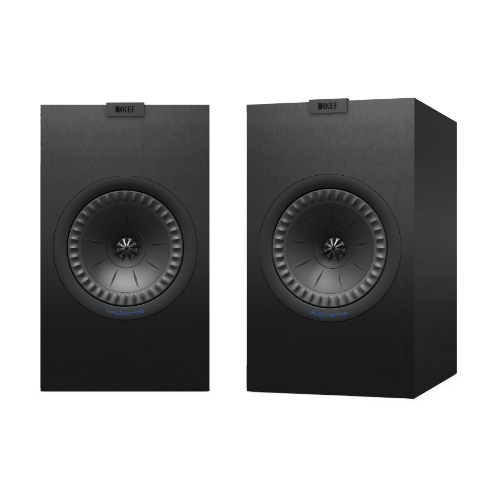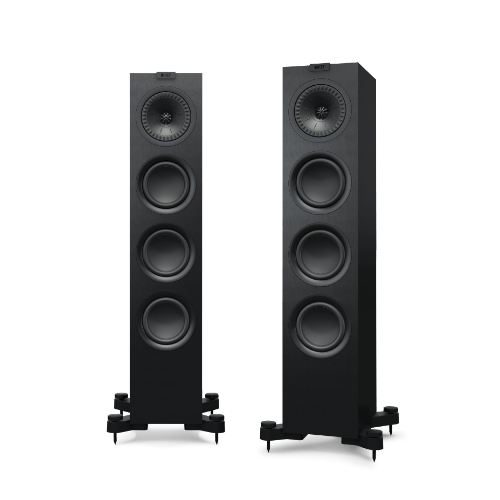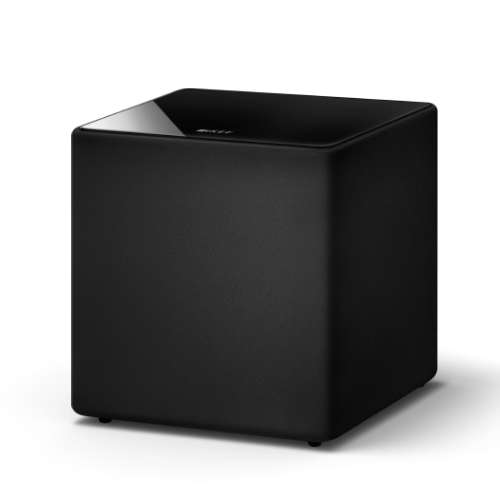Prior to obtaining the KEF Q150's, I was perfectly happy listening to a pair of Warfedale D320 bookshelf speakers. My audiophile efforts of late are confined to a desktop, near-field environment, and I use compact gear (due to space). I also maintain a Mackie 8" powered subwoofer under the desk.
As a matter of quick background information, a good 30+ years ago, I used to delve into a variety of room-sized audio components, including the (then) wonderful KEF 104 II and their flagship model, the 105. In addition to those, I also experimented with various transmission line speakers, such as the IMF transmission line monitors and the remarkable (talk about subterranean bass) Irving M. Fried's Model H system. As you see, I was addicted to the "British" sound.
Over the past month or two, I found myself visiting the KEF website to keep up with what was happening with their product line, and the Q150's intrigued me due to their smaller size (and what would actually fit within my system). I also noticed - with much curiosity - as to how KEF constantly juggled the price back and forth from $299 and $599. I can tell you that I would not have had the urge to purchase these at their normal $599 price (and that's not disparaging the Q150's at all). So recently, when the sales price dropped again to $299, I pounced on them - the black versions. As an aside, KEF should just stick with a particular price (like $299) and keep them there. I also purchased - separately - the magnetic snap-on grills, which are superbly designed and functional (those are $19.95 per grill).
When the Q150's arrived, I found then to be actually a tad smaller in height and width (and I mean just a tad) than my Wharfedale D320's. However, the KEF's have a longer (depth) to them (by a few inches) over the Warfedale's, so I had to adjust my speaker stands to bring them further out on the desk. The speakers have a solid heft to them - definitely not cheap feeling.
When it comes to amplifiers, I try to choose compact models (due to my limited space on my desktop). After doing much research, I purchased some absolutely compact, yet outstanding amps - some of which are so ridiculously inexpensive, yet punch far above their weight when it comes to audio reproduction. Some of those being the diminutive Aiyima A07 and A08, and the Micca A250's Origain amps. All 3 of these are class D amps, yet have sound characteristics (once broken in and warmed up) like class AB models - now go figure. I wouldn't have believed this if I hadn't tried these amps myself. Thanks to the other audiophiles who made me aware of them. My other amplifiers are much larger.
I began the listening sessions with the Q150's by using the Cambridge AXA25 integrated amp (which is actually a full-sized, solidly constructed amp), and then later connected the custom (you have to go to Asia to find this one) Fosi HD-A1 Class AB 50 WPC amp - a built-like-a-tank difficult to find amp. Cables used to connect various components (mainly DAC units) were from World's Best Cables (WBC) and Blue Jeans Cables. All the amps mentioned above were already broken-in/warmed up, so I could jump right into the listening sessions.
The very first thing I noticed - and it was quite uncanny - was the ability of the Q150 to be able to delineate the fine (even very minute) differences among different power amps. The Wharfedale D320's are very nice also, but they did not have the ability to resolve the differences among some amps that the KEF Q150 could easily render. The positives about this is that you realize what a wonderful transducer system that the Q150 is - however, the negative that may result is that you may also discover that some of your previously favorite amps, may not be up to task with better speakers (such as the Q150's).
Sound-staging and front-to-rear depth are also exemplary, with instruments - in particular, with classical music scenarios such as large symphony orchestras - being rendered with that often difficult to reproduce "air" around each instrument that contributes to the feeling of being at a live performance. Instrumental timbres are right on - with each instrument sounding superb and realistic (of course, with excellent source material). The speakers are also very capable of rendering very dynamic musical passages. As I type this, I am listening to Copland's Fanfare for the Common Man, and that was followed by Saint Saen's Organ Symphony for orchestra #3. All I can say is that I'm experiencing goose bumps.
The Q150's can demonstrate strong bass characteristics (which is a good thing), however, how you place them is important since a poor location may result in music that has an underlying bass personality, and even shading out (like a veil) the mids and treble regions. So experiment with the placement of these as I did. Of course, if you are using them in a desktop, near-field setup as I have, then you are limited with placement. In that case, make s...





